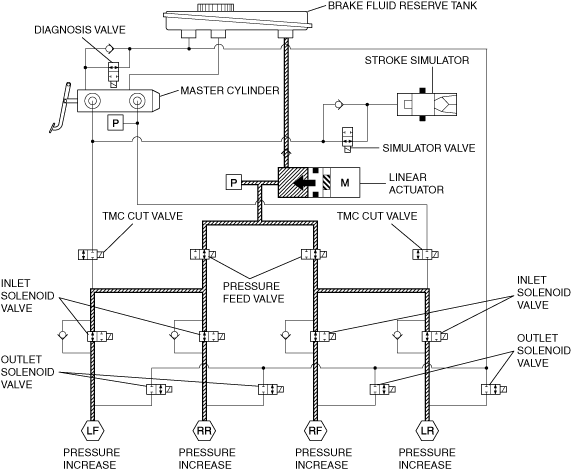• If the SAS control module determines a collision after detecting vehicle is hit by another vehicle when the vehicle is under any of the following conditions, brake control is performed.
• Operation conditions
-
― The selector lever is in the P position.
― The parking brake is operating.
― The brake pedal is depressed (electronically controlled brake unit monitors brake fluid pressure).
• If the SAS control module detects that the detecting vehicle in a stopped condition is hit by another vehicle and moves when any of the following conditions is met, a brake control request signal (3) is output from the SAS control module to the electronically controlled brake unit. (A hazard warning indicator light flash request signal is sent to BCM at the same time.)
• When the electronically controlled brake unit receives the brake control request signal, it energizes the pressure feed valve, switches the hydraulic circuits, and increases the brake fluid pressure. As a result, the brake control operates (4). A brake light signal (5) is output from the electronically controlled brake unit to the BCM at the same time.
• While the brake control is operating, the brake lights turn on (6) automatically.
• When the vehicle is under any of the following conditions, brake control is canceled.
-
― The main power is not switched OFF and the electric motor is stopped.
― Approx. 1.5 s have elapsed after the vehicle is stopped by brake control operation.
― The accelerator pedal depression amount is approx. 20% or more while brake control is operating.
― The brake fluid pressure higher than the pressure occurring due to the brake control operation occurs due to the brake pedal depression.
